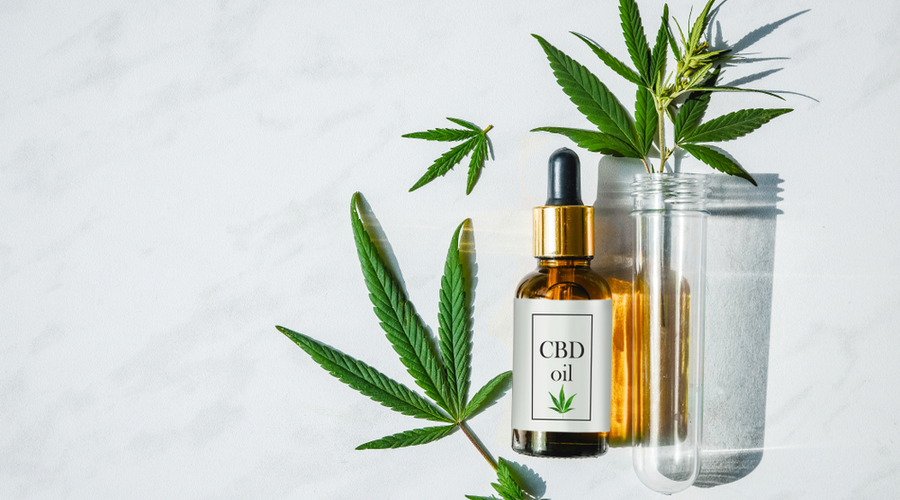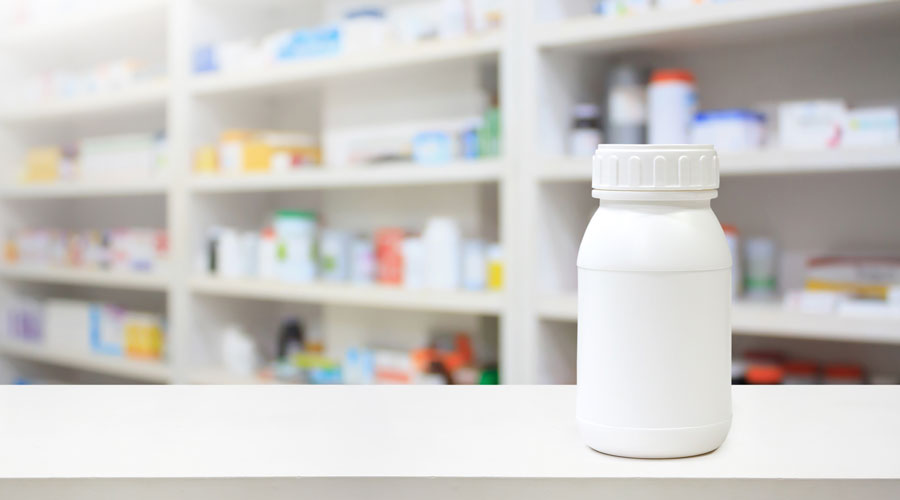Over the past few years, cannabidiol (CBD) has become a sort of industry gold rush for retailers across the US, especially after the product was legalized federally in 2018. Market predictions continue to be bullish, with some analysts expecting it to reach $20 billion by 2024.
Independent pharmacies who have jumped on board have found CBD to be a reliable source of strong margins. Rick Stone, owner of Hutchison Medicine Shoppe, generally makes 50 percent margin on his CBD, which for his selection amounts to around $25 to $40 per sale. “Just to put that in perspective,” he said, “the average prescription profit is about $12, so it makes sense if you can add four or five CBDs a day, that’s like another 20 prescriptions a day as far as profit goes. So we find it worthwhile.”
Toni Shields, director of pharmacy at Queen’s Price Choppers, makes similar margins and views CBD as one way to fight the low reimbursement rates seen from third-party claims. “We face so many challenges in pharmacy, we have to find other ways to make revenue,” she said. “It has to be a good margin and CBD fits that category perfectly.”
Margins are one thing, but volume is another. Angela Norton, owner of Health Center Pharmacy, has felt the pressure from competitors in the two years she’s been offering CBD. “Our biggest challenge is probably the vast amount of CBD options online and at other retailers that customers have to choose from,” she said, though she is still finding success with her offering.
According to Statista, only 6 percent of Americans consume CBD daily, and there are tens of thousands of retailers vying for their business, including big box stores. A 2019 Consumer Reports study revealed that 40 percent of CBD users get theirs from a dispensary, and 27 percent get theirs from online retailers. Independent pharmacies fell somewhere in the 34 percent of “retail stores.”
With so much competition in the marketplace, how can a pharmacy make its CBD offering thrive?
Education
Unlike prescription drugs, where a doctor prescribes a proven treatment with specific doses and directions, many patients come to CBD without much knowledge or any direction from a medical professional. They may have heard about it from their friends or coworkers, they may have researched a bit on the internet, or they may have only heard snippets here and there in the news. For these patients, education is the door to their wallets—and to their well-being.
“That’s where the opportunity lies,” Shields said. “There are some educated consumers out there, but there’s this opportunity for pharmacists as healthcare providers to educate people that don’t even know they want it. You can sell it to them because you can obviously see the medications they’re on, and their situation or need. If somebody’s having certain issues or complaints, I’ll say, ‘Well, have you ever tried CBD?’”
Initiating those conversations requires a basic understanding of the science and how CBD can apply to patients’ different health needs. Shields is passionate about learning and teaching, and she tries to pass the passion along to her pharmacists and staff so they are able and ready to engage with patients about CBD. “If you haven’t trained your staff, they aren’t going to know how to sell it,” she said.
Stone mandates a certain level of knowledge among his staff as well. “As a pharmacist, you always want to know the science,” he said. “I always have my pharmacists and techs read up on it, so everybody to a point is an expert somewhat. You don’t want to be too specific to the patient, but you want to be there to answer questions. You want to know what you’re talking about.”
The science involves the endocannabinoid system in the body, but most importantly for pharmacists it involves drug interactions—this is a top patient concern, according to the pharmacies we interviewed, and patients won’t get that kind of information from anyone else selling CBD. Another common concern is the risk of failing a drug test, a worry pharmacists can quell by offering options with zero THC. Norton commonly has to educate patients on the addiction potential of CBD, which is low.
While it’s important to understand the science, it is also important to know how to explain it simply and to not overwhelm them with information, Stone said. He will break down the science in layman’s terms and then give the patient brochures containing more details. Shields uses brochures as well as dosing cards.
But to bridge the science to a sale, you also have to know your patients. The better you understand each individual’s needs, the better you’ll be able to demonstrate the benefit of CBD for their particular ailments. “Our best strategy has been knowing our patients and their conditions,” Norton said. “We attribute our success to conversations with our customers, our customers telling their friends, and repeat customers. Starting a conversation about the benefits of CBD has been an easy start.”
Trust and quality
When pharmacists use knowledge and education to engage patients about CBD, they reinforce their image as a trustworthy provider, which is the key differentiator from the competitors, according to the pharmacies interviewed. That wins over patients in the first place, and it keeps them coming back.
But knowledge is only one part of the equation. The products must also prove out. Patients trust the pharmacy to provide a high-quality product, and failing on that account dissolves trust and erodes the pharmacy’s image. “As a pharmacist, my reputation is on the line,” Shields said. “The public trusts that pharmacists aren’t going to sell them something that’s not good, that’s not in the best interest of the customer.”
Finding quality products, however, can be a tall task. The newly legalized product is largely unregulated, and studies have emerged over the last several years with disconcerting statistics. A 2017 study published in JAMA found that 69 percent of CBD products purchased online were mislabeled, containing more or less ingredients than claimed. Twenty percent had THC levels high enough to potentially result in intoxication or impairment. This year, the FDA sent a report to Congress stating that their testing revealed “significant inconsistencies between the amount of cannabinoids advertised on product labeling and the actual amount contained in products.”
That’s why Stone, Norton, and Shields curate a selection with a batch-level certificate of analysis that can be easily accessed. Stone sells MedTerra and Prairie Hills Hemp Company, Norton sells Natural Native, and Shields sells her own brand called CannabaRx. All of these brands have their products tested by third-party labs, and they post the results publicly on their websites.
One crucial point about the efficacy of the CBD is the dosing. As pharmacists know, even if the product is top-notch, a wrong dose will render it ineffective. But some patients never consider that, and if not corrected they may believe you peddled them substandard product. Norton’s patients will sometimes claim the CBD doesn’t work only to be delighted when a dose adjustment does the trick. Stone recommends a stair-step approach, with patients starting small and working their way up. Shields provides a dosing card with specific instructions, including what to do if the CBD isn’t working. “It tells them exactly what they need to do, where they need to start,” she said. “It really helps the patient.”
Don’t Forget the Display
An overlooked aspect of selling CBD is how and where to display the products. Just like any front-end item, strategic merchandising is key to maximizing sales, but it also comes with a crucial caveat.
“We have some signage in the store that brings it to their attention. You don’t want to hide it. But it’s also a very high dollar item, so you have to watch out for possible theft,” Stone said. His solution is to display only one of each type of product. That keeps his loss risk at a minimum while allowing patients to still see everything he has to offer.
Likewise, Shields sets the display in a prominent place under lock and key or keeps it safe behind the counter where it’s visible to the customer. Norton’s CBD also sits behind the counter, which means she’s always able to discuss the products and engage in those important conversations with patients who show interest in CBD.
From the Magazine
This article was published in our quarterly print magazine, which covers relevant topics in greater depth featuring leading experts in the industry. Subscribe to receive the quarterly print issue in your mailbox. All registered independent pharmacies in the U.S. are eligible to receive a free subscription.
Read more articles from the September 2020 issue:
- Point of care testing: a cash business opportunity for pharmacy
- The key to a thriving CBD offering
- How to make the most of the cash sitting in your bank
- The ultimate track-and-trace (DSCSA) checklist for pharmacies
- How the pandemic has changed the way independent pharmacies do business
- Attract more shoppers to your pharmacy with one simple device
- How to provide a successful Medicare open enrollment service
- Creating a successful employee schedule: advice from industry experts
An Independently Owned Organization Serving Independent Pharmacies
PBA Health is dedicated to helping independent pharmacies reach their full potential on the buy side of their business. The company is a member-owned organization that serves independent pharmacies with group purchasing services, expert contract negotiations, proprietary purchasing tools, distribution services, and more.
An HDA member, PBA Health operates its own NABP-accredited (formerly VAWD) warehouse with more than 6,000 SKUs, including brands, generics, narcotics CII-CV, cold-storage products, and over-the-counter (OTC) products.
Want more pharmacy business tips and advice? Sign up for our e-newsletter.











